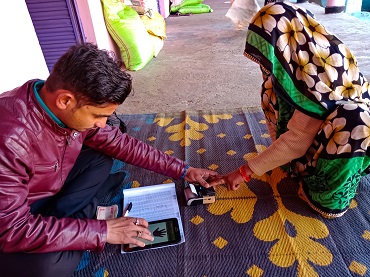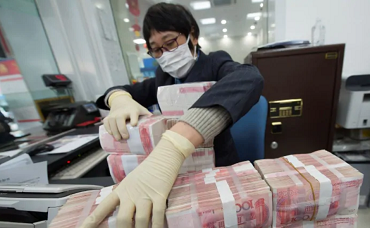Blog
Risk Sharing during COVID-19: the Need for Uncommon Measures

Virtual Roundtable Summary
Visceral. Gigantic. Terrifying. Unprecedented. As the world runs out of adjectives to describe the socio-economic shock of COVID-19, countries have been rushing to adopt adequate policy responses. And the task has been daunting. The pandemic clearly represents a ticking-time-bomb for innumerable SMEs globally, which have to suddenly deal with severe cash flow constraints. How to quickly and efficiently provide substantial liquidity support? How to ensure the protection of lenders against losses on the loans made to SMEs? As the clock is dangerously running out, governments, credit guarantee institutions, and financial institutions must imperatively join forces to properly manage and mitigate risks for small businesses hit by the crisis.
As part of a weekly webinar series on COVID-19 mitigation efforts, the SME Finance Forum hosted a virtual roundtable on Risk Sharing in the Biggest Crisis Ever. Katrin Sturm (Secretary-General of the European Association of Guarantee Institutions) and Haesong Kwon (Deputy Director of the International Affairs Team in Korea Credit Guarantee Fund) presented the initiatives undertaken in Europe and South Korea to enhance and deploy vast credit guarantee schemes. Discussants Abdelmoughite Abdelmoumen (Head of Strategy and Cooperation at CCG Finance), Maria Laura Garcia Conejero (General Manager of FOGABA), Ahmed Islah (Chief Risk Officer for CGC), Giuseppe Gramigna (US SBA Chief Economist), and Mark Scicluna Bartoli (Executive of EU & Institutional Affairs, Bank of Valletta) then talked about the various proactive measures introduced around the world, respectively in Morocco, Argentina, Egypt, the United States, and Malta.
First, all participants emphasized the importance of unlocking and delivering liquidity in a fast, adaptive, and unbureaucratic way. While the European Union has quickly loosened rules on state aid to give members full flexibility to support their affected businesses, the United States has already injected $350bn to help SMEs through the Paycheck Protection Program (PPP). Acting as a powerful countercyclical buffer, credit guarantee programs also play a pivotal role in assisting vulnerable SMEs, most of them primarily relying on debt financing. Both the EU and the U.S. Small Business Administration have thus taken the unprecedented step of raising loan guarantees up to 100%. Furthermore, guarantee institutions across Europe and the US have introduced a myriad of uncommon measures, which have been customized to the specific needs of SMEs in a particular market. For instance, in the EU, these actions have included the increase of total guarantee volume to be granted, the extension of duration/maturity of guarantee, the full subsidy of interest rates, and the reduction of collateral repayments. The US SBA has doubled the maximum loan guarantee amount, broadened the qualifying and use of proceeding criteria, and postponed fees and interest payments on existing and new guarantees. Finally, with confirmation that loans were used in accordance with the specified standard procedure, SMEs would be able to convert them to a full grant.
Second, several countries and institutions have taken proactive steps to set up and extend loan guarantee schemes worldwide. In South Korea, KODIT has used its experience and knowledge from previous financial crises - namely in 1997 and 2008 - to promptly roll out a three-pronged guarantee program. This special-purposed guarantee package has not only aimed to support SMEs and micro-businesses, but it has also focused on the stabilization of the corporate bond market - via the issuance of primary collateralized bond obligations. Similarly, Bank of Valletta has benefited from its extensive know-how in developing risk-sharing instruments to implement its program promptly after obtaining the regulatory green light - being the first bank to act in the market. In Argentina, guarantee funds such as FOGABA have paradoxically taken advantage of two years of ongoing economic recession to nimbly adapt to the COVID-19 crisis. In Morocco, CCG Finance has offered two special products, Oxygen Guarantee, and Self-Employed Package, which seek to cover cash expenses - e.g. salaries, rent, utilities, etc. - that cannot be deferred, without collateral requirements. Lastly, CGC in Egypt has set up various strong measures, among them the increase of guarantee coverage to 90% and a 40% reduction in g-fees.
Nevertheless, governments and credit guarantee institutions have been facing various practical challenges. Although a massive amount of liquidity has been swiftly delivered domestically, in some countries programs have been depleted at an alarming rate, therefore requiring governments to adopt follow-up programs. And numerous countries - especially less advanced and/or heavily indebted economies - will not have the capacity to continuously meet the huge local demand for emergency credit. Moreover, some administrations have encountered technical difficulties while deploying their far-reaching financial assistance program, as recently exemplified by the PPP in the U.S. Critically, guarantee schemes must also carefully balance the need to accept and cover more business loan applicants with the responsibility to maintain an appropriate risk limit. In this respect, inconsiderately designed guarantee programs might eventually create or even exacerbate moral hazard and adverse selection issues for risk-taking lenders. To address this, the European Commission has required that state aid may only be given to companies that were not in difficulty by 31st December 2019.
Finally, a consensus has emerged around the necessity to move fast, be innovative, but also have a forward-looking mindset. As discussed in previous roundtables, accelerating the digital transformation of the economy will represent a great leap forward in strengthening the robustness and resiliency of SMEs. What’s more, governments and financial institutions must not only keep providing vital working capital support, but they should also not forget about the deteriorating health of capital markets. More importantly, all players must stop working in silos and instead collaborate more closely on the international stage. Loan guarantee schemes should be effectively implemented at the regional and global levels. And thinking beyond current relief measures, lenders must immediately start to design products that will ultimately help SMEs seamlessly adapt to new market conditions in the post-COVID-19 era.
To conclude, the pandemic has made one thing clear: the future of SME banking must be digital, sooner rather than later. And policymakers must imperatively promote an enabling environment for the fast, but safe development of a new digital ecosystem.
“What is now proved was once only imagined.” (William Blake).
The COVID-19 crisis has definitely proven the urgency to embark on a global digitization journey.

















































